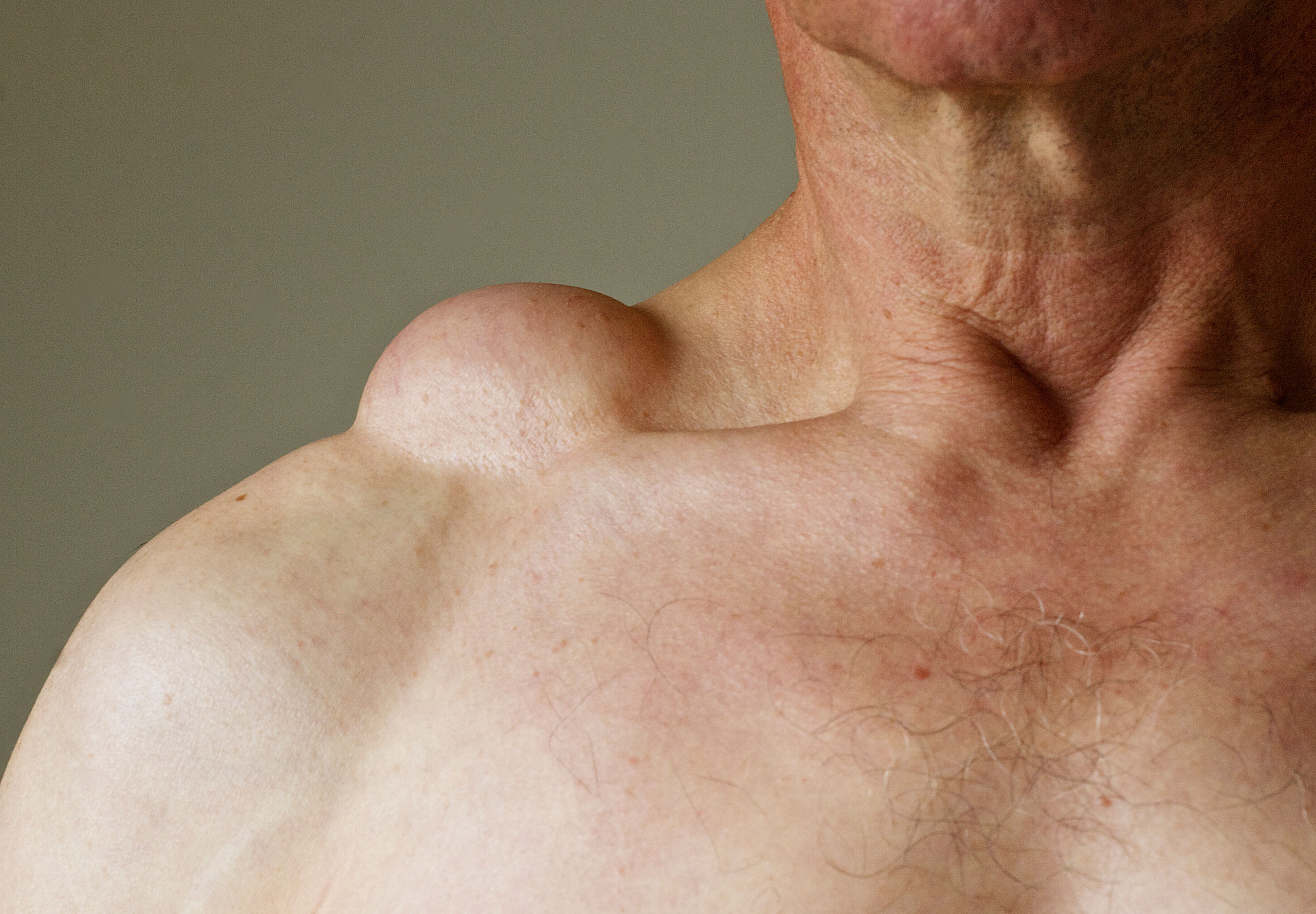Lipoma
Key facts
- Lipomas are benign (not cancerous), fatty lumps that are quite common.
- Lipomas can appear anywhere that you have fat cells.
- They most commonly grow on your neck, chest, back, shoulders, arms and thighs.
- The cause of lipomas is often unknown, but they can sometimes run in families.
- Most lipomas do not need to be removed, unless they are painful, or you are bothered by how they look.
What is a lipoma?
Lipomas are harmless, fatty lumps. They are benign, meaning they are not cancerous, and are quite common.
Lipomas can appear anywhere that you have fat cells. They most commonly grow on your neck, chest, back, shoulders, arms and thighs. Sometimes lipomas grow inside your body, and you may not be aware they are there.
Most often, you will only develop 1 or 2 lipomas. Occasionally, however, some people develop many lipomas. This is most likely due to rare inherited conditions, such as familial multiple lipomatosis.
What are the symptoms of lipomas?
Lipomas typically:
- feel soft and 'doughy'
- are small (1cm) but can grow larger (5cm to 10cm)
- can move around a little under your skin when pressed
- grow slowly
- don’t cause pain, but can become painful if they grow larger or press on a nerve

What causes lipomas?
Often, the cause of lipomas is not known.
Lipomas are more common in people aged 40 to 60 years.
However, some types of lipomas run in families. You may have a genetic tendency for developing them. Inherited lipomas might be due to:
- familial multiple lipomatosis
- Gardner's syndrome
- Dercum’s disease — also called adiposa dolorosa and related to obesity
- Madelung's disease — also called multiple symmetric lipomatosis and related to heavy use of alcohol
- other genetic differences
When should I see my doctor?
You should see your doctor if you have any lump that you are concerned about. See your doctor again if:
- the lipoma seems to be growing
- you have new pain or pain that is getting worse
- the skin over the lipoma is red
FIND A HEALTH SERVICE — The Service Finder can help you find doctors, pharmacies, hospitals and other health services.
How are lipomas diagnosed?
Your doctor will ask you about your symptoms and examine you.
If the diagnosis is not clear, they may send you for tests, such as:
- an ultrasound
- CT scan
- MRI scan
- a biopsy (a test of a small sample of tissue)
Some lumps that look like lipomas can be cysts. Cysts tend to be closer to the skin surface and firm to the touch.
Some lumps that look like lipomas can be cancerous, such as liposarcomas. These lumps tend to be painful, fast-growing and fixed under the skin. In this case, your doctor will refer you to a specialist for diagnosis and treatment.
If your doctor has any concerns or you want the lipoma removed, they may refer you to a specialist.
ASK YOUR DOCTOR — Preparing for an appointment? Use the Question Builder for general tips on what to ask your GP or specialist.
How are lipomas treated?
Most lipomas don’t need to be removed unless they are painful.
You may need to have a lump removed to get a formal diagnosis. You may also choose to have a lipoma removed if you are bothered by how it looks.
The most common way for your doctor to remove a lipoma is to cut it out surgically or use liposuction.
What are the complications of lipomas?
Most lipomas are small and don’t cause any complications. Lipomas may cause complications if they are large and compress (squash) nearby structures and nerves.
If your doctor removes a lipoma, some possible complications of surgery are:
- infection
- bleeding
- pain
- scarring
- the lipoma comes back
If you have diabetes or take corticosteroid medicines, you may be more likely to get an infection or heal more slowly after surgery.
Can lipomas be prevented?
Lipomas can’t be prevented.
Resources and support
To read more about managing a skin lesion visit the Community help pages on The Australasian College of Dermatologists website.
Healthy WA also has information about skin lesions.
You can also call the healthdirect helpline on 1800 022 222 (known as NURSE-ON-CALL in Victoria). A registered nurse is available to speak with you 24 hours a day, 7 days a week.
Learn more here about the development and quality assurance of healthdirect content.
Last reviewed: July 2025










